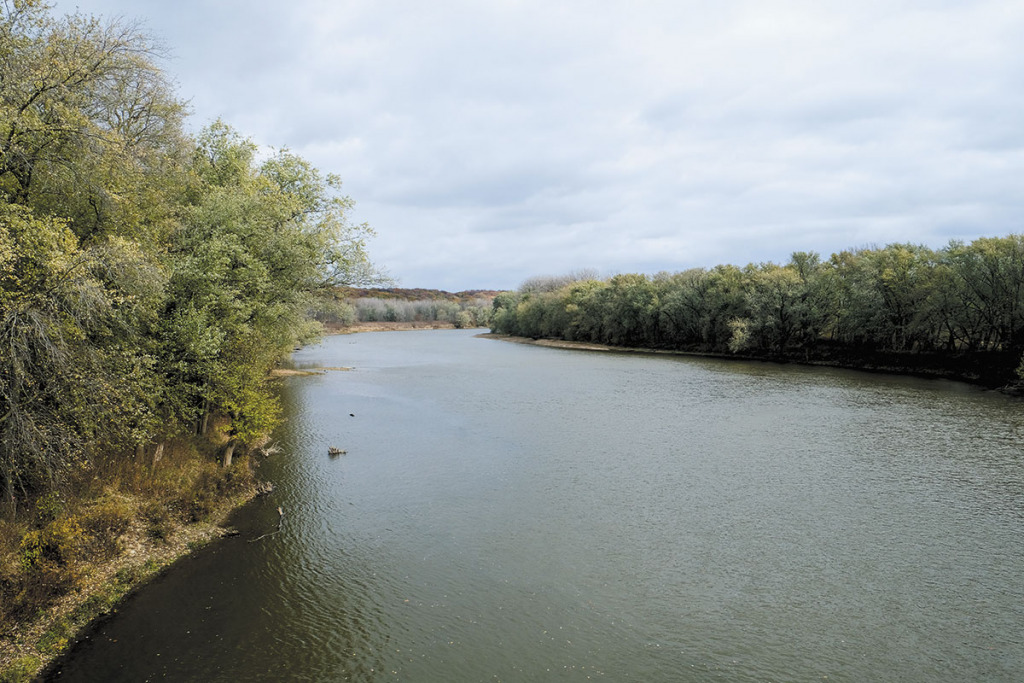Subscriber Benefit
As a subscriber you can listen to articles at work, in the car, or while you work out. Subscribe NowThe Indiana Finance Authority — tasked with analyzing water demand supply across a 13-county stretch around Tippecanoe County — will now include every county that touches the headwaters of the Wabash River for a total of 28 counties.
“The study was originally planned to give the state a thorough understanding of demand and supply availability across the 13 counties over the next 50 years,” said Jim McGoff, IFA chief operating officer and director of environmental programs. “Adding in the Wabash headwaters, a considerable span of geography just north of the original study area, will produce a more comprehensive report of the current and future water availability and use.”
The state agency took over the study previously helmed by the Indiana Economic Development Corporation (IEDC) in November in anticipation of a massive high-tech park in Boone County known as the LEAP Lebanon Innovation District.
One of the entities rumored to be considering the site needs water for its manufacturing needs that Boone County couldn’t supply. This led to a proposal to pump millions of gallons of water daily from Tippecanoe County 35 miles away. Pushback from Tippecanoe officials, including General Assembly members, prompted a water study but concerns about the IEDC’s ability to be independent shifted oversight to the IFA.
The original 13-county study area included Benton, Cass, Carroll, Clinton, Fountain, Howard, Montgomery, Parke, Tippecanoe, Tipton, Vermillion, Warren and White counties. Additions include: Allen, Boone, Blackford, Delaware, Grant, Huntington, Jay, Madison, Miami, Noble, Randolph, Vigo, Wabash, Wells and Whitley counties.
Initial results from the IEDC study, by Texas-based environmental consulting firm INTERA, showed “abundant water availability” in September. The IFA has retained Stantec Consulting Services, Inc. and Jacobs Engineering Group, Inc.
Traditionally, the state agency manages Indiana’s wastewater and drinking water revolving fund loan programs and often completes regional water supply studies. This study will be its fourth since 2017. Previous studies analyzed water along the I-74 corridor, as well as areas south and east of Indianapolis.
Preliminary data from the study are anticipated to be released in late spring or summer with final results in the fall.
Indiana Capital Chronicle Reporter Leslie Bonilla Muñiz contributed to this report.
The Indiana Capital Chronicle is an independent, not-for-profit news organization that covers state government, policy and elections.
Please enable JavaScript to view this content.


So far, looking at the existing studies, there’s enough water to support the LEAP district. I dont understand why those who oppose the project think that water from the Wabash belongs soley to one county and one county only. Any water found in the state should be for the better use of the entire state. Lots of powerful Indiana politicians have endorsed this project and wants to see it up and running. Indiana is stiff competition with Ohio, Missouri and other Midwest states that’s all positioning for huge economic projects like this. Indiana must do all it can to stay competitive or the state will become more insignificant than some would say it already is.
This project is a milestone and inflection point for The State of Indiana. This study combined with LEAP will guide Indiana when it comes to handling our water resources in the future. It’s not about today. It’s about 10-50 years down the line. We have to find a balance for water use and economic growth. We must learn from the mistakes other states have made (south west US) and do better.
Andretti manager Apollo SPAC Fund 1, L.P.
Apollo buys Virtuoso.
Virtuoso buys Wejo.
Wejo merged with IEDC’s Project Energy Reimagined, a LEAP shell that gets a $1B project from IEDC somehow.
The FTC just banned GM for selling our data.
We are the Andretti F1 Fund.